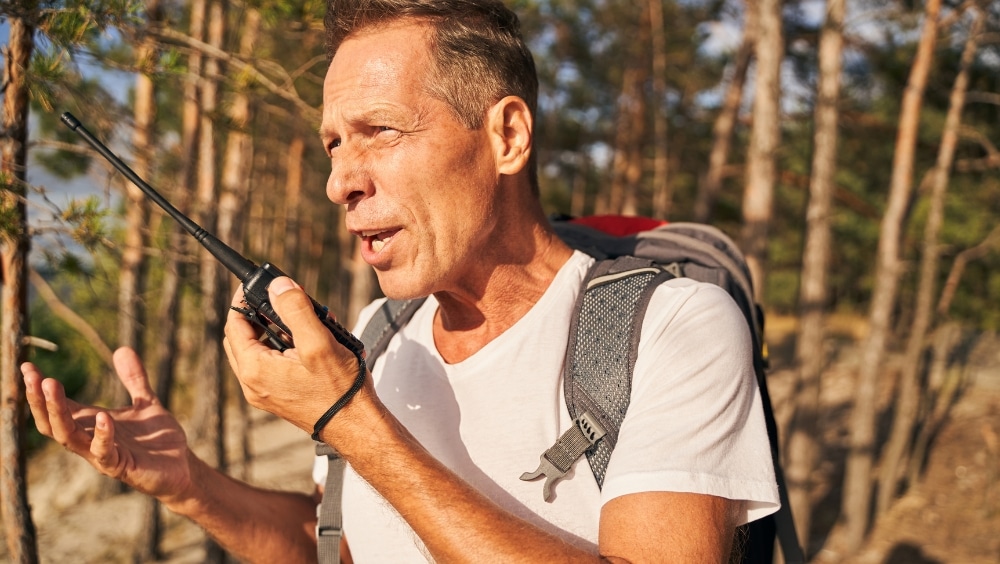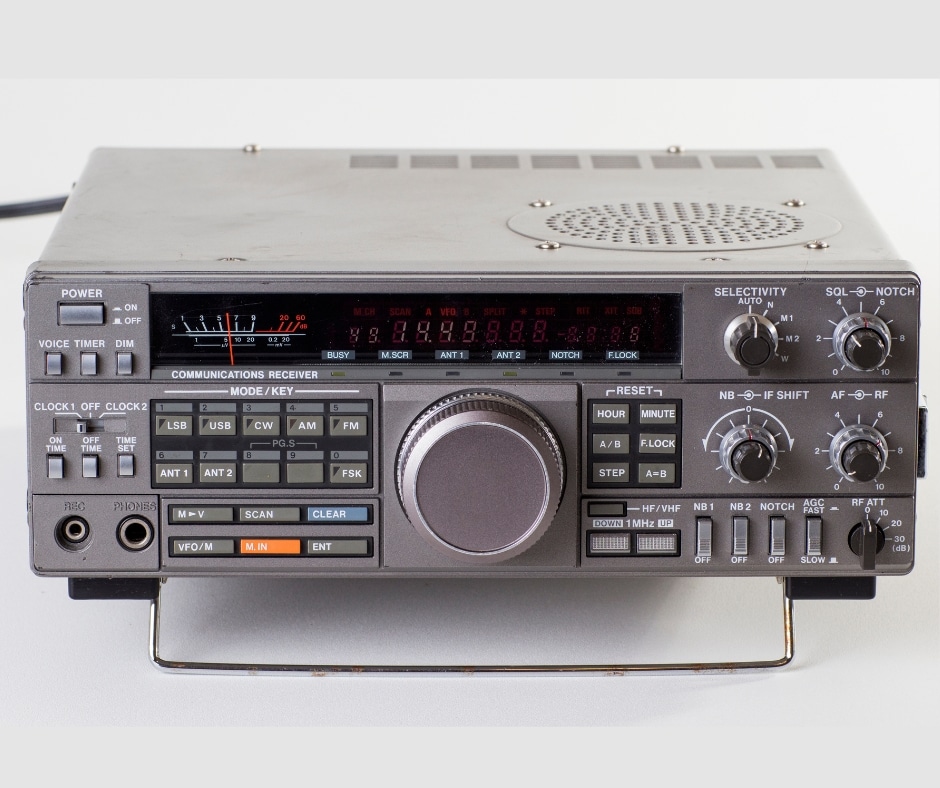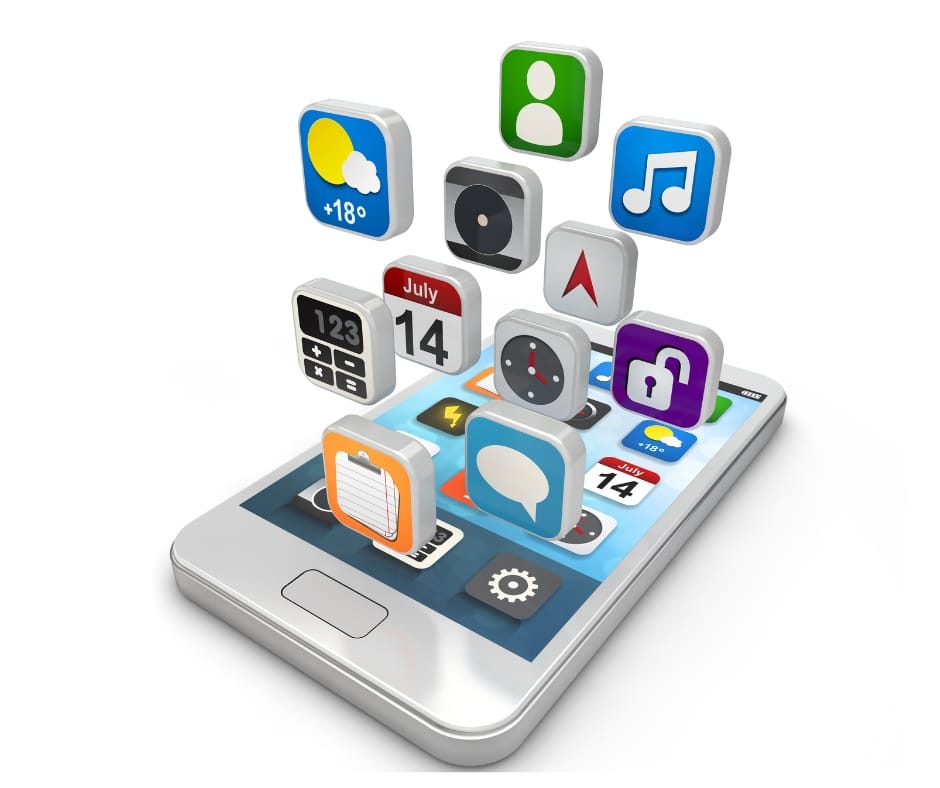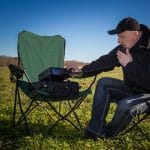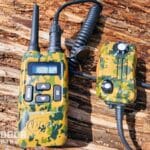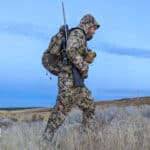Walkie-talkies make communication across shorter distances incredibly simple. They are so simple that just about anyone can use them. It’s why people love them so much for camping, hiking, skiing, or on construction sites and in the service industry. They’re simple, lightweight, and extremely portable, but sometimes they aren’t enough.
Walkie-talkies often fail to carry enough power to provide a long range of transmission or the ability to get around certain obstacles. There are plenty of alternatives to using a walkie-talkie or even any two-way radio that can fill in the gaps where walkie-talkies fall short.
The best alternatives for walkie-talkies are CB radios, ham radios, smartphone apps, or push-to-talk relay devices. Each one of these alternatives has an area in which it shines. By learning each alternative’s technical specs and function, you can get the best device for your exact use.
Best Walkie-Talkie Alternatives
| Biggest Selling Point | Mode | Maximum Range | |
| Walkie Talkie | Portable and lightweight with no need for towers | Radio | 20-30 miles |
| Ham Radio | Distance | Radio | Worldwide |
| CB Radio | Accessibility | Radio | 50 miles |
| Shortwave Radio | Long range | Shortwave Radio | Worldwide |
| Smartphone Apps | No new devices | WiFi and Cellular Data | Worldwide |
| Relay | Simplicity and size | WiFi and Cellular Data | Worldwide |
Walkie-Talkie
While we’re looking at walkie-talkie alternatives, we need to also look at the walkie-talkie itself. These have been around for so long, and many people swear by them. They’re great for specific purposes but have limitations in certain areas.
Walkie-talkies are a great pick for when you want something easy to use over a short range without any access to WiFi or cellular data towers.
However, they come up short in many ways, and where other devices tend to do much better. Walkie-talkies are great for short-range communication, but there are a few long-range options that are worth looking at as well.
Pros
- Portable and lightweight
- Durable and weatherproof models
- Easy to use
- Direct and immediate communication
- Emergency services
- No need for towers
Cons
- Limited range
- Need to recharge
- Can be expensive
- Obstacles interfere with transmission
Range
- Up to 30 miles in a direct line
- Average range of 5 miles or less
Frequency
- 462.5625 to 462.7250 MHz
License Required
- No for FRS (Family Radio Service) channels under 1-watt transmission power
- Yes, for GMRS (General Mobile Radio Service)
CB Radio
The Citizen Band (CB) radio is what you see truckers use. It’s similar to what the police and other emergency services use in their vehicles as well. However, law enforcement and emergency radios work on a dedicated bandwidth that is not open to the public. CB radios are on an open frequency that anyone can use.
Typically, a CB is a control box with a handset attached to it that operates over a shorter distance.
These are simple to use and allow for accessible communication in larger teams that aren’t moving on foot. The CB radio doesn’t need to be portable, and anyone can use them without a license.
The biggest drawback is that they are fixed into a car, on a desk, or at some other base station so they can have access to an antenna and power for being boosted.
Pros
- No license required
- Easy to use while driving
- 40 channels
Cons
- Fixed location
- Not made for rough use
- Need an antenna
Range
- Averages 10-15 miles
- Maximum 50 miles with base
Frequency
- 40 Channels between 26.965 MHz and 27.405 MHz
License Required
- No
Ham Radio
Have you ever been driving down the highway and seen cars with massive antennas on the roof? Or do you have a reclusive neighbor with a 20-foot-tall radio tower in his backyard?
The best bet is that they’re ham radio users. Ham radio is an amateur or non-commercial radio that is a hobby for most people but can be used in major emergencies when everything else is shut down. They can be large, permanently installed devices, but there are also mobile ham radios.
Ham radio users (hammers) have come to the rescue in natural disasters like Hurricane Harvey and Hurricane Maria. They make it easy to communicate with emergency teams due to the massive systems that people have built in their own homes.
It’s easy to say that ham radios are the best for emergency preparedness. Even handheld ham radios can reach up to 50 miles, which far outweighs the range of a walkie-talkie. With a complete system, people can talk to astronauts in the space station!
Pros
- Massive range (even to space!)
- Operates on up to 1500 watts legally
- More structured communication
Cons
- Expensive gear for a good system
- Requires license
- Long-range ham radios are not portable
Range
- Handheld: 1-20 miles
- Mobile: 5-1200 miles
- Base station: 50-2500 miles
Frequency
- 1.6 MHz to 1240 MHz
License Required
- Yes (for Amateur Radio Service)
Shortwave Radio
People have been sending messages abroad with shortwave radios since the 1920s. This radio-style operates in high-frequency ranges, allowing access to an incredible range.
The science behind it all is fascinating. Because of the radio waves’ length, they can bounce off the ionosphere, a layer of electrically charged atoms in the atmosphere, and come back to earth. This process is called skip propagation.
This ability to move a great distance is one reason shortwave radios are often used for radio programs trying to reach mass audiences. They can be a good alternative to walkie-talkies if you are trying to communicate globally but they aren’t capable of being very portable.
Pros
- Massive range
- Utilizes skip propagation to maximize range
Cons
- Use too much power for a handheld device
Range
- Theoretically limitless
Frequency
- 3 MHz to 30 MHz
License Required
- Yes (same as for Ham radio)
Smartphone Apps
Because almost everyone already carries around a communication device in their pockets, many smartphone apps have been developed to function as walkie-talkies. Some have multiple additional features that make them more attractive than others, like ALO which can receive messages from a desktop so it’s a favorite of business workers.
Other apps like Voxer, HeyTell, and Zello are some better-known walkie-talkie apps available on different platforms. Some of these come with different features like a $3 voice-changing addition, but they will also function as simple audio communication devices.
There are other features like location sharing, group channels, and specialized topic groups to join for discussion. The apps are a great choice if you’re looking to communicate as if you’re using a walkie-talkie but don’t want the hassle of buying a whole new device.
Pros
- No need to purchase new devices (as long as you already own a smartphone)
- Works with any internet connection
- Has many new features not found on two-way radios
- Several apps available
Cons
- Requires WiFi or cellular connection
- Other users must also have the same app
- Not as customizable
Range
- Because it uses WiFi, there is no range
Frequency
- 4G, LTE, and WiFi
Relay

There’s always new tech coming out that’s exciting, but the Relay is a new gadget that people absolutely love. This tiny box is a simple push-to-talk walkie-talkie, but is far more compact and easy to use. Because it operates on a 4G LTE or WiFi connection, it works with unlimited channels, and functions anywhere you can get a cellular connection.
The Relay was designed to be a way for parents to communicate with their kids without buying them a phone. The little box is small, lightweight, and only has a single button to communicate with.
Ever since its introduction, hospitality and construction workers have taken to it. It allows for easy communication without looking away from what you’re doing.
On top of the ease, it also has GPS enabled so you don’t have to worry about losing it or the person it’s with.
Pros
- Easy to use
- One touch function
- GPS tracking
- Lightweight, compact, and durable
- Multiple accessories available
Cons
- Requires WiFi or cellular connection
Range
- Because it uses WiFi, there is no range
Frequency
- 4G, LTE, and WiFi
What can replace a walkie-talkie?
The walkie-talkie comes up short in a lot of areas. For example, when you’re looking for something that can reach further than the maximum walkie’s distance of around 30 miles (in perfect conditions), you simply need a different tool.
Many devices can replace a walkie-talkie and pick up where it falls short. Ham radios are potentially the best alternative for walkie-talkies when you want to stick to radio frequencies, but with emerging technology, it’s hard to say you shouldn’t move away from that.
If you’re ready to move away from utilizing radio waves, smartphone apps and new devices like the Relay can make for the best alternatives to walkie-talkies.
Apps like Zello, Voxer, and HeyTell are all great choices to bring two-way communication to your smartphone or computer. Many of these apps allow you to send short voice messages along with text and images for diverse communication options.
The Relay is the closest alternative to a walkie-talkie, but it works off WiFi and cellular data. It’s a perfect replacement for a walkie-talkie because of its simplicity, function, and durability. Since it uses the internet to move audio, it does not need a bulky transmitter. This makes it a favorite for anyone wanting something lightweight and portable.
Walkie-Talkie Advantages
You can’t ignore the benefits that walkie-talkies bring with them. They’ve been around for ages and are a favorite for many professions and recreators to have reliable communication when access to cell phones and radio towers is limited.
There are many advantages of walkie talkies such as:
- Portability
- Designed for rough use in tough conditions
- Simplicity
- Access to weather and emergency channels
- No need for an internet connection or proximity to towers
- Direct and immediate communication
While new tech is coming around, the traditional walkie-talkie still stands strong as one of the best options for certain activities.
For example, when you go out skiing, you need reliable communication with those on your team. The harsh conditions that skiing can bring with it means you could easily smash your phone while taking a glove off to use it, or you could fumble with a handheld ham radio with its complexity.
Sometimes walkie talkies are the best.
FAQs
What’s the most powerful two-way radio?
Ham radios are by far the most powerful two-way radios out there. Some of these radios can put out 1500 watts of power when attached to a base. This far outweighs any other options and provides a massive available range.
Are two-way radios or walkie-talkies better?
Two-way radios and walkie-talkies are the same but different. Walkie-talkies are portable and handheld two-way radios that allow for only a single transmission at a time. Many other two-way radios function for longer distances, but walkie-talkies are your best option for short-range, portable communication.
What’s the most powerful walkie-talkie without a license?
Most of the best walkie-talkies will use up to 2 watts of power, while handheld ham radios can use up to 5 watts. However, broadcasting on any ham radio requires a license granted by the FCC. Any walkie-talkie that uses 2 watts will be the most powerful walkie-talkie you can use without a license.
Can a smartphone be used as a walkie-talkie?
Smartphones now have many applications that allow them to function like walkie-talkies. That being said, a walkie-talkie is strictly defined as a handheld and portable two-way radio that operates on radio frequencies. So yes, a smartphone can be used as a walkie-talkie, but can not be called one.
Is there a Wi-Fi walkie-talkie?
The Relay is a new tech device that is essentially a WiFi walkie-talkie. It uses both cellular data and wireless internet to broadcast audio to other devices it’s connected to. Many other walkie-talkies operate on WiFi, but the Relay is the most unique.

